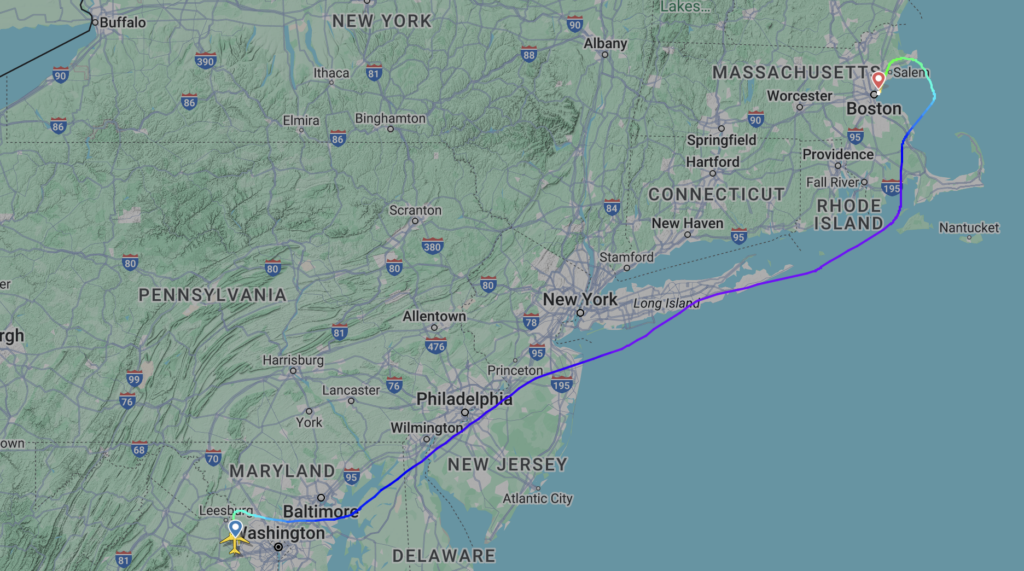Passengers Left Shaken After British Airways From Washington DC Jet Suffers Bird Strike and Cabin Fills With Fumes
- A British Airways flight with as many as 220 passengers onboard made an emergency landing in Boston on Saturday evenihg after a suspected bird strike caused fumes in the cabin and engine vibrations mid-flight.

Passengers on a British Airways flight from Washington, D.C., were left shaken after their plane was forced to make an emergency diversion to Boston Logan Airport on Saturday evening when a possible bird strike caused the engines to start vibrating and fumes to pour into the cabin.
Flight BA216 from Washington Dulles to London Heathrow departed at around 6:20 pm on April 26 but shortly after climbing to a cruising altitude of 35,000 feet, the pilots of the Boeing 777-300 decided to abandon the transatlantic flight and head straight to Boston.

In a statement, the Federal Aviation Administration (FAA) confirmed that the pilots onboard the 13-year-old aircraft “reported a possible bird strike and fumes in the cabin.” The FAA said it would be investigating the incident.
Other reports suggest that the pilots experienced engine vibrations following the suspected bird strike.
“We are sorry for the delay to our customers’ travel plans, but the safety of our customers and crew is always our priority.”
British Airways statement
In a statement, a spokesperson for British Airways said: “The flight landed safely after diverting to Boston as a precaution following a suspected bird strike.”
“We are sorry for the delay to our customers’ travel plans, but the safety of our customers and crew is always our priority.”
The plane landed at Boston Logan at around 7:30 pm on Saturday night and is still on the ground while engineers checked the aircraft for damage.
Bird strikes can be incredibly dangerous and have accounted for a number of notable aviation accidents in recent years. The most prominent of which was US Airways Flight 1549 on January 15, 2009, which was quickly dubbed the “Miracle on the Hudson.”
Miraculously, Captain Chesley ‘Sully’ Sullenberger managed to land the US Airways Airbus A320 on the Hudson River after a flock of geese was sucked into both engines during the initial ascent, taking out both engines and effectively turning the plane into a glider.
Accident investigators are also probing whether a bird strike could have been responsible for the crash landing of Jeju Air flight 7C-2216 at Maun International Airport in South Jeolla Province, South Korea, last December.
Of the 175 passengers and six crew members onboard, only two flight attendants sitting at the very rear of the aircraft survived the accident after the Boeing 737 plowed into a concrete fence at the end of the runway and burst into flames.
As you can tell, the biggest danger from a bird strike is when they are sucked into the engines. However, bird strikes can also cause damage to the leading edge of the wings and, in some cases, cause significant damage to the cockpit windscreen.
Last November, the Captain of a Flair Airlines flight from Toronto to Winnipeg was injured in a bloody accident after the Boeing 737MAX jet suffered a serious bird strike as it departed from Toronto Pearson Airport.
As the plane climbed out of Toronto Pearson, it impacted a flock of geese, one of which ‘penetrated’ the cockpit windscreen and injured the pilot. Thankfully, the pilots were able to land the aircraft safely.
Related
Mateusz Maszczynski honed his skills as an international flight attendant at the most prominent airline in the Middle East and has been flying ever since... most recently for a well known European airline. Matt is passionate about the aviation industry and has become an expert in passenger experience and human-centric stories. Always keeping an ear close to the ground, Matt's industry insights, analysis and news coverage is frequently relied upon by some of the biggest names in journalism.







